How Much Wind Can A Tent Withstand? The things that you need to know in order to get your tent set up properly, including how much wind it can withstand.
Did you know that if your tent is not properly set up, it can easily be blown away in high winds? That’s why it’s important to understand how much wind a tent can withstand before heading out on your next camping trip.
In general, tents are designed to withstand winds of up to 30 mph. However, this varies depending on the size of your tent, how many people are in it, and what type of terrain you’re camping on.

- How Much Wind Can A Tent Withstand?
- Will My Tent Withstand 50 Mph Winds?
- What Should I Do If I’m Caught In A Windstorm?
- How Much Wind Is Safe for a Pop-Up or Canopy Tent?
- What Is Too Much Wind For A Tent To Withstand?
- What Is The Maximum Wind Strength For Tents?
- What Are the Various Types of Tents?
- How Much Wind Can A Gazebo Withstand?
- How to Make a Tent Windproof?
- Conclusion
How Much Wind Can A Tent Withstand?
A tent can withstand a lot of wind, but it depends on the type of tent. A single-wall tent will not be able to withstand as much wind as a double-wall tent.
The fabric on a single-wall tent is less durable and can tear more easily than the fabric on a double-wall tent.
The more durable the fabric, the better it can withstand wind and rain. A good way to test whether a tent can withstand wind is to look at the manufacturer’s specifications.
Choosing a camping tent is an investment in your future travels. To help you make this important decision, we’ve lined up some tents for different needs and budgets below!
- Coleman Sundome Tent
- Clostnature Backpacking Tent
- CAMPROS Camping Tents
- Coleman Cabin Tent
- Core 9 Person Cabin Tent
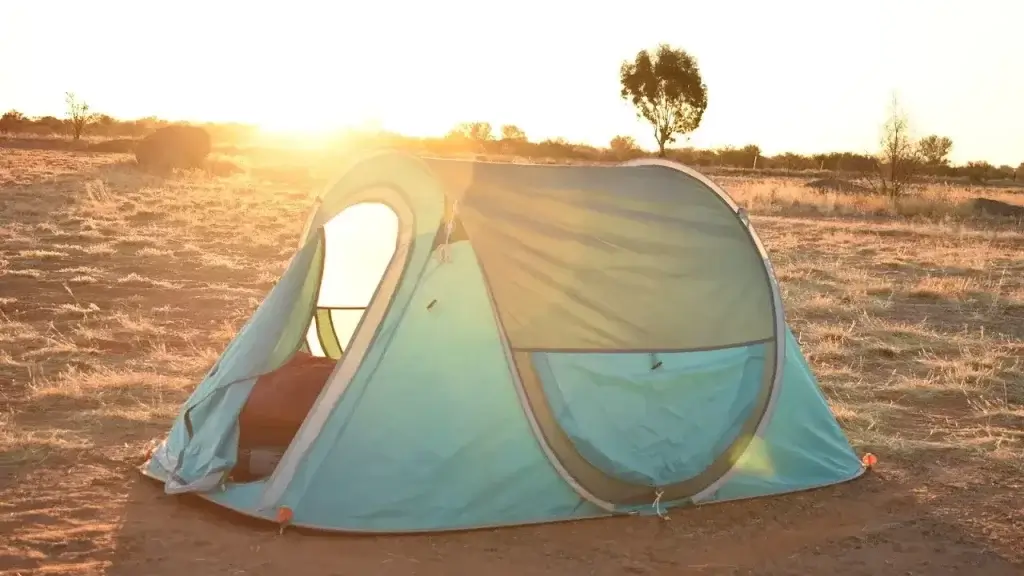
Most tents are able to withstand winds of up to 30 mph, but some can withstand winds of up to 60 mph.
It is important to remember that the wind speed will increase with altitude, so it is important to choose a tent that can withstand the highest wind speed in the area where you will be camping.
For example, a tent that can withstand 50 mph at sea level might only be able to withstand 20 mph on the top of a mountain.
Fiberglass and aluminum poles are more durable than carbon fiber poles, and they can withstand wind gusts better.
You Might Like: When Do Campgrounds Close for the Season?
Make sure to stake your tent down properly, using all of the stakes that come with the tent. If you don’t have enough stakes, you can use rocks or logs to help secure the tent.
In order to prevent the tent from tipping over, make sure that you know where the wind is coming from and how it will affect your campsite.
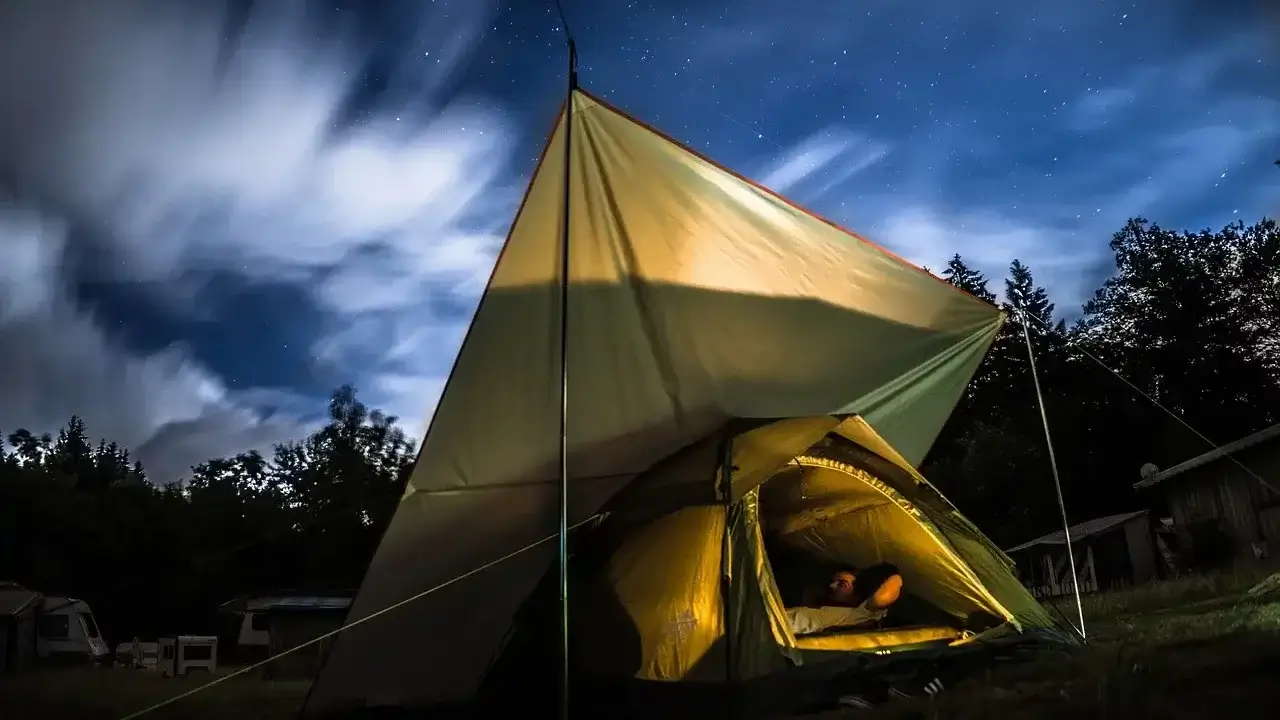
You can also avoid the winds by camping during a different time of year or on a more protected part of the site. Think about what you want to get out of your trip – if good weather and high views are important to you, then it might be worth camping at a more exposed site.
In general, tents can withstand wind speeds of up to 60 mph if they are well-made and properly staked down with all the stakes that come with them.
Make sure to know where the winds will be coming from when choosing your campsite in order to protect your tent.
Will My Tent Withstand 50 Mph Winds?
A tent can usually withstand wind gusts of up to 50 mph. However, if the tent is not properly secured to the ground, it may be blown away in high winds.
It is important to stake down your tent securely before venturing into windy areas. Make sure all guy ropes are tightly fastened and use extra weight (e.g. rocks) if necessary to keep your tent grounded.
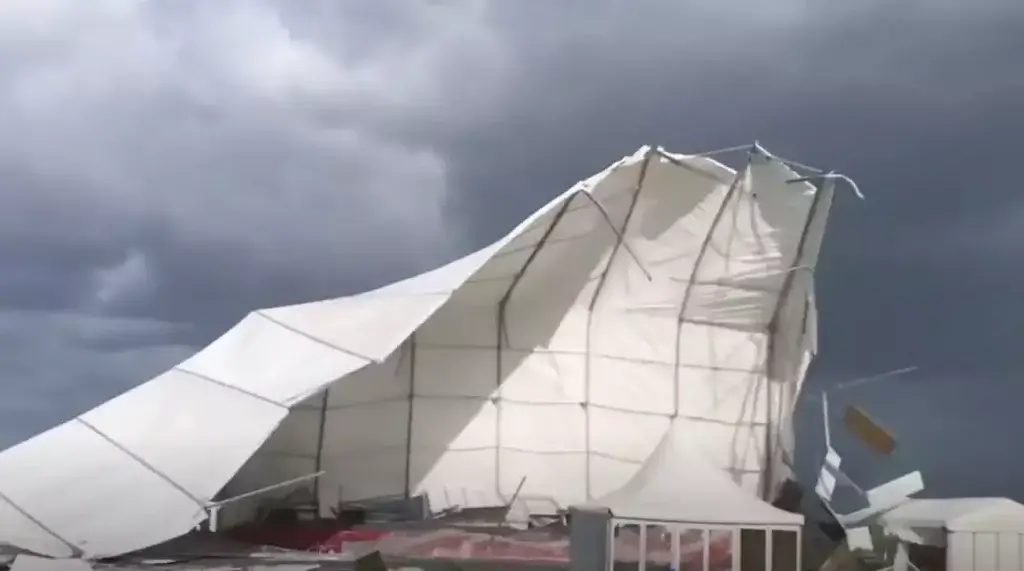
The chart below shows the wind speed at which different types of tents are designed to withstand:
- Tents for car camping or tailgaiting ˃ 45 mph (72 km/h)
- Backpacking, hiking, and mountaineering ˂ 35 mph (56 km/h)
- Beach canopy ˃ 25 mph (40 km/h)
- Pop-up tent or instant canopy ˂ 20 mph (32 km/h)
If you are camping in an area with high winds, it is best to choose a tent that is designed to withstand stronger gusts.
What Should I Do If I’m Caught In A Windstorm?
If you get caught in high winds while camping, there are a few things that you can do to stay safe.
First, make sure that your tent is properly anchored to the ground. You can use stakes or sandbags to keep it from blowing away.
If possible, move any heavy objects inside the tent and secure them as best you can.
Finally, make sure that you will not be directly exposed to high winds. You can do this by moving to a sheltered area or by getting inside the tent and closing the door as best you can. Stay safe and have a great trip!
How Much Wind Is Safe for a Pop-Up or Canopy Tent?
A pop-up or canopy-style tent is not designed to withstand severe weather conditions, but it can typically handle wind speeds of up to 70 miles per hour.
If you are looking for a tent that will provide more protection from the wind and other elements, then you will need to invest in a larger and sturdier model.
Keep in mind that the larger the tent, the heavier it will be, so make sure you are able to transport and set it up easily.
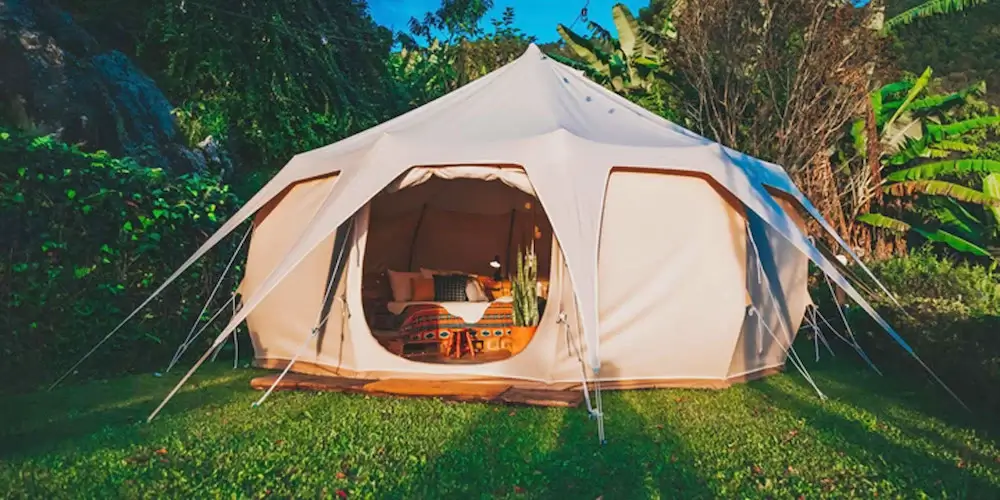
Remember to always read the instructions carefully before setting up any type of tent, as incorrect assembly could lead to damage or injury.
Also, be sure to check the weather forecast before heading out on your camping trip, and take appropriate precautions if severe weather is expected.
Not Designed For Extreme Weather Environments
Tents are best used in nice weather, not when the climate is extremely windy or rainy.
It is important to note that tents are not really meant for adverse weather conditions. They can withstand a certain amount of wind and rain, but if the weather gets too bad, your tent might not make it.
Make sure you know what the weather is going to be like before you set up camp, and be prepared to take your tent down if it starts to rain too hard.
A good rule of thumb to remember for how much wind a tent can withstand would be about 20 mph winds. Anything above that might cause your tent to rip apart or collapse on you while you’re inside it.
The Canopy’s Material Depends On Its Longivity
Your main consideration should be the canopy material. The durability of your tent depends on what it is made of.
Some tents are made out of nylon while others are composed out of polyester or a combination thereof. Nylon tents are more durable than polyester ones, but they do not hold up well in the rain.
Camping Tents made out of mesh are great for ventilation and bug protection during warmer months when you don’t need it to be waterproof. However, the same is true that if it rains then your tent can quickly become soaked through due to the mesh material.
The next factor to consider is the tent poles. Tent poles are usually made of aluminum, fiberglass, or carbon fiber and they play a significant role in the durability of your tent.
Aluminum poles are heavier but more durable than fiberglass ones which can bend easily. Carbon fiber poles are light and very strong but also expensive.
What Is Too Much Wind For A Tent To Withstand?
Most tents can withstand winds up to 30-40 mph, but this varies depending on the type of tent and its construction. For example, a three-season backpacking tent will typically be able to withstand more wind than a pop-up camping trailer.
If you’re in doubt about how much wind your tent can handle, it is best to play it safe and take down the tent as soon as you notice any strong wind.
Also Read: How to Put Out a Campfire Without Water?
Winds over 50 mph can cause damage to your tent, and winds over 75 mph can completely destroy a tent. It’s important to keep in mind that even if your tent can withstand high winds, it doesn’t mean you’re safe from getting blown away.
Make sure to stake down your tent securely and use guy lines if necessary, and always keep your tent’s entrance facing away from the wind to keep out gusts.
What Is The Maximum Wind Strength For Tents?
If wind speeds are too high, the force of the tent flapping around will cause wear and tear to your equipment. This can create a safety hazard for you or others if it becomes too strong!
Wind speeds over 40 mph (65 kph) have been known to cause problems with smaller tents.
Larger tents can withstand more wind, but be careful not to put too much trust in them! In some cases, gusts of over 100 mph (160 kph) have been known to damage or even destroy tents.
So before you go out and camp in the middle of a storm, make sure to check the weather conditions and choose a spot that is appropriate for the conditions!
And always be prepared for the worst-case scenario. In the event that your tent does get blown away, make sure to have a backup plan in place!
What Are the Various Types of Tents?
A tent can be a great place to spend an outdoor activity. There are different types of tents for various weather conditions, from the type that can withstand high winds and heavy rainfall to those suitable for cold temperatures.
The choice of a tent for the outdoor activity should be made in accordance with the weather conditions. For example, if it is windy outside then a person needs to buy a tent that can withstand high winds and vice versa.
There are three main types of tents:
- A-Frame
- Dome
- Tunnel Tents
A-Frame
A-Frame tents are the simplest type of tent. They have two upright poles that form an A-shape and a canopy that hangs from them. These tents are best for mild weather conditions.
Dome Tents
Dome tents get their name from their shape – they look like a dome. These tents are stronger than A-Frame tents and can withstand heavy rain and strong winds.
Tunnel Tents
Tunnel tents are the most complex type of tent and they provide excellent protection against wind and rain. These kinds of tents need more poles than other types but that is because of these aid in their sturdiness.
They also have a lower center height which makes it possible for people to move around easily inside.
How Much Wind Can A Gazebo Withstand?
A gazebo is a great investment for anyone who likes to spend time outdoors. Not only does it provide shelter from the sun, but it can also withstand strong winds.
Depending on the size and construction of the gazebo, it can typically handle winds up to 60 mph. Just make sure to secure it properly to avoid any damage in high winds.
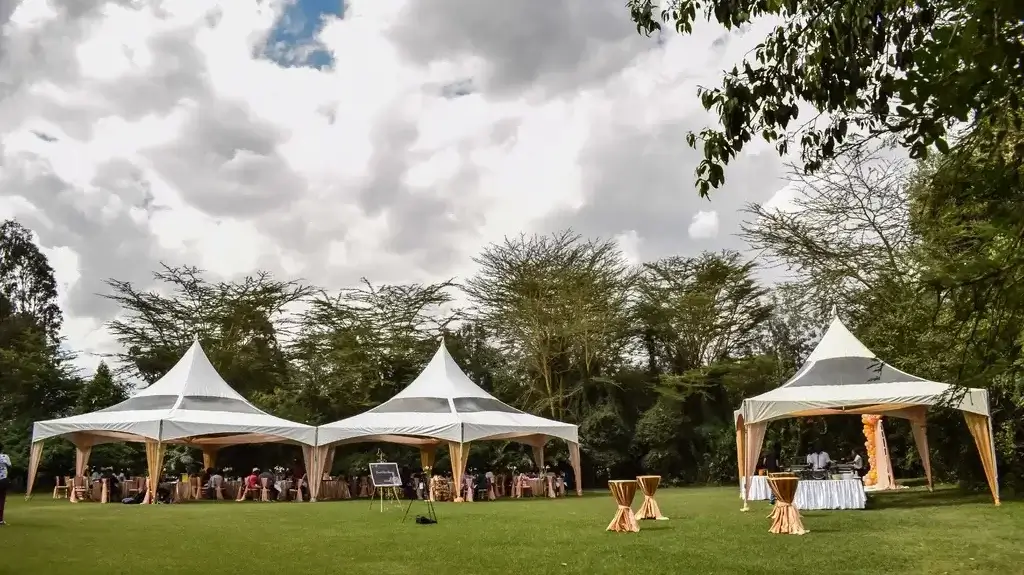
There are various types of gazebos, including:
- Lean-to gazebos
- Market gazebos
- Pavilion gazebos
- Pergola gazebos
- Rotating gazebos
- Octagonal gazebos
- Screened gazebos
- Shelterlogic gazebos
- Standard gazebos
- Tent-like gazebos
If you’re looking for a tent that can handle strong winds, be sure to look for one with a wind rating of at least 75 mph. This will ensure that your tent is able to withstand even the strongest gusts.
And if you’re really worried about wind, consider investing in a canopy or pavilion instead of a tent.
A pavilion is another great investment for anyone who loves spending time outside. Not only can it provide shelter from the sun, but it’s also meant to withstand strong winds and rainfall as well.
How to Make a Tent Windproof?
Tents are usually made of cloth or nylon, but the fabric is not inherently windproof. You can make your tent more wind resistant by anchoring it to several stakes that are driven firmly into the ground.
The heavier and sturdier your tent poles are, the better you will be able to combat high winds with them also.
Finally, if you have a chance to choose, select different types of fabric for your tent walls and ceiling. Thicker material will obviously be more resistant to wind than its thinner counterpart.
Conclusion
Camping in strong wind can be a challenge, but with the right preparation, it can still be enjoyable.
Make sure to bring plenty of stakes to keep your tent anchored down, and select a sturdier model if gusts are expected. And don’t forget about other camping essentials like a good rain fly and windproof jacket!